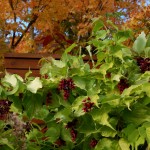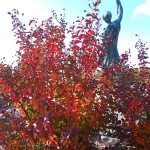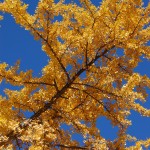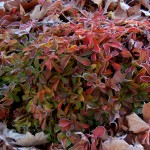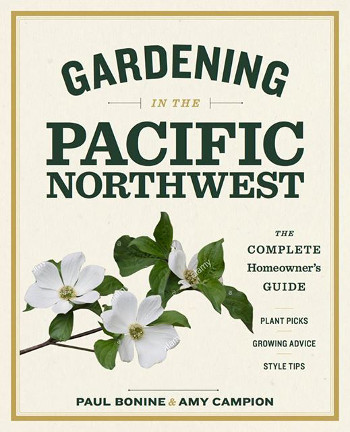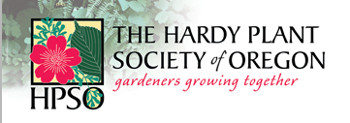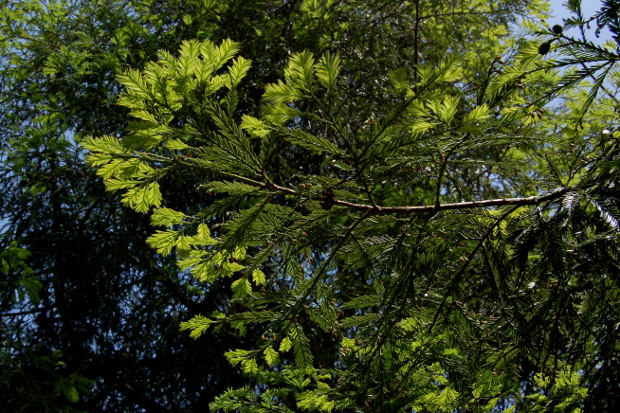Baldcypress (Taxodium distichum) turns a smoky-orange color in October.
Baldcypress (Taxodium distichum), a deciduous conifer, makes the color calendar during the week of October 11 with duckling-soft foliage that turns a smoked-salmon color. In contrast to most broadleaf trees which color from the outside-in, deciduous conifers develop fall tints from the inside-out, glowing more each day until the entire tree is saturated with color. Baldcypress offers fall color through November 7th as it changes from pastel green, to coppery orange, to a warm, rusty brown.
A native of Southern swamps, baldcypress rises from alligator-populated waters there like a prehistoric sentinel. Related to the giant redwoods of the West, it is one of the longest-lived trees found in the Eastern United States and can live to the unfathomably old age of 1,800 years. Plants don’t typically get taller than 100 feet, so they don’t compare to redwoods on that level, but they do build outrageously wide buttressing trunks; the largest living ones have a DBH (Diameter Breast-Height) of 17 feet.
Despite its Southern pedigree, baldcypress is hardy to Zone 4 and adapts to a wide variety of growing conditions (preferring those that are acidic). When grown in boggy sites, the species’ quirky, characteristic “knees” rise from the water, though these don’t develop in well-drained soil.
‘Peve Minaret’ is a compressed version of the species much in vogue among plant connoisseurs. It is compact, but not miniature—a 10-inch start planted at the JC Raulston Arboretum in 2003 was 20 feet tall after 10 years. A weeping variety, ‘Cascade Falls’, must be grafted to keep it from snaking along the ground, and thus treated becomes a 20-foot wooly mammoth in green. A landscaper friend once told me that after planting a weeping white pine in his own front yard, a helpful neighbor assured him that if he watered it, the tree would “perk right up.” I can only imagine what a lost cause the neighbor would have thought a weeping baldcypress to be had it turned orange, and then brown, and dropped all of its needles in a heap at its feet!

